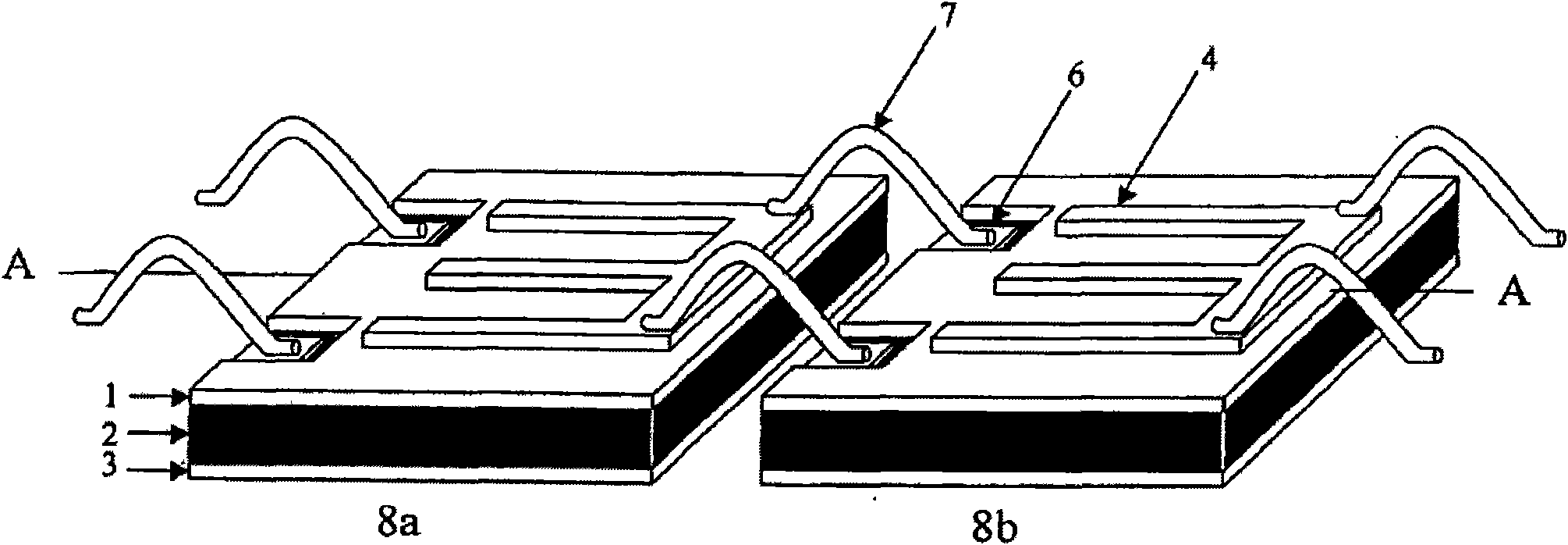Solar module serially connected in the front
A solar cell, series connection technology, used in energy conversion devices, sustainable manufacturing/processing, final product manufacturing, etc., can solve the problems of unrealization and high surface loss
- Summary
- Abstract
- Description
- Claims
- Application Information
AI Technical Summary
Problems solved by technology
Method used
Image
Examples
Embodiment Construction
[0059] Figure 2 shows two solar cell elements 8a, 8b according to the invention and also shows that these two solar cell elements are electrically connected in series to form a solar module according to the invention. Figure 2a shows the situation in the form of a three-dimensional overall view, Figure 2b One of the solar cell elements (element 8a) according to the invention is shown in a cross-sectional view on the plane A-A, which is perpendicular to the plane of the semiconductor layers of the device and perpendicular to the axis described below, about which the respective The solar cell elements are arranged adjacent to each other at intervals (direction of electrical series connection). Figure 2c A top view of the device according to the invention perpendicular to the plane of the semiconductor layers is shown.
[0060] Each of the solar cell elements 8a, 8b according to the present invention comprises the following components: a supporting semiconductor layer 2 (here...
PUM
 Login to View More
Login to View More Abstract
Description
Claims
Application Information
 Login to View More
Login to View More - R&D
- Intellectual Property
- Life Sciences
- Materials
- Tech Scout
- Unparalleled Data Quality
- Higher Quality Content
- 60% Fewer Hallucinations
Browse by: Latest US Patents, China's latest patents, Technical Efficacy Thesaurus, Application Domain, Technology Topic, Popular Technical Reports.
© 2025 PatSnap. All rights reserved.Legal|Privacy policy|Modern Slavery Act Transparency Statement|Sitemap|About US| Contact US: help@patsnap.com



